Passion for fashion
A behind-the-clothes look at the 2020 fashion show
February 15, 2020
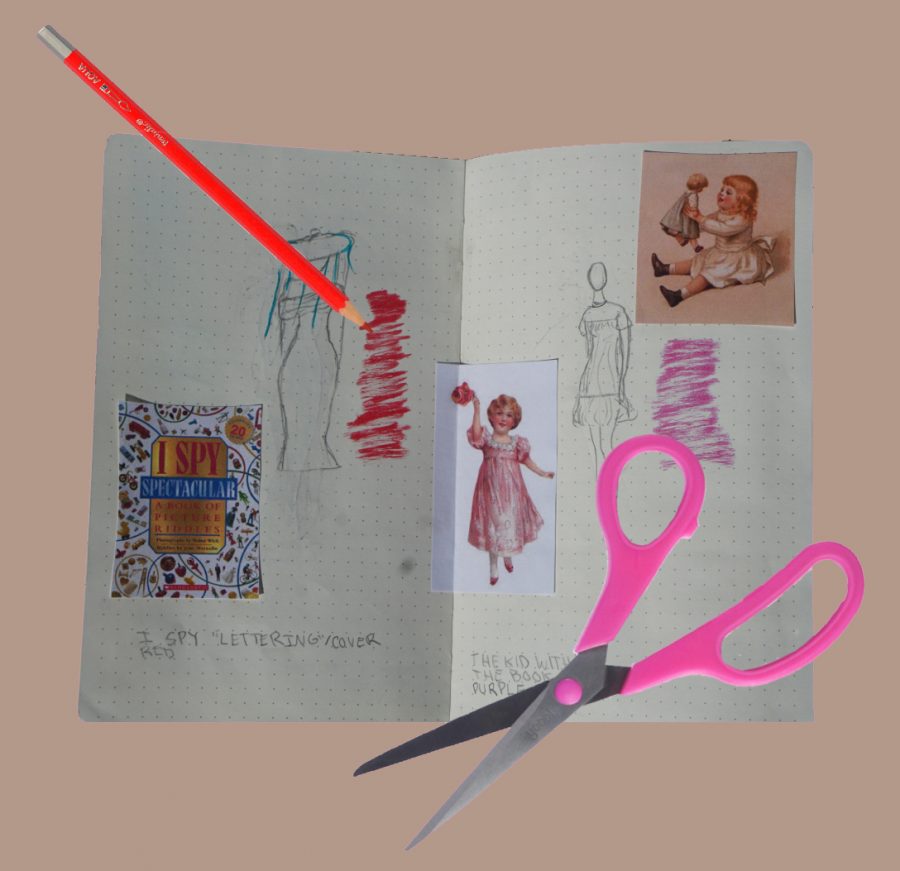
The image is an overhead shot of junior designer Veronica Crist’s sketchbook for her line for tonight’s benefit fashion show. “I’ve been interested in fashion forever,” she stated. “I was the kid in elementary school who started all the trends,” she said. “In sixth grade, my dad finally bought me a sewing machine and sent me to classes where I spent one week learning the basics of making clothes.” Graphic by Madelynn Niles.
“Scrapbook.” To many, images of heart stickers and seasonal stamps may flash by. Thoughts of double sided tape galore and zig-zag-cutting scissors may flood in. But, in this case, what we are talking about is far from Aisle 7 at your local Hobby Lobby.
The annual McCallum Fashion Show is seen by students as a parade of artistic decisions, the end result of a four-month process. However, this leaves the extensive stages of creating and organizing unseen, the entire in-between known only to participants. From the early stages of the design process to the untold stories of trend-setting fourth-graders, the roots of this student-organized event and the people that it consists of come in many different shapes and forms — and for the designers, sophomore and junior interns, and senior directors, there is so much more than the polished product.
In the early months of the fall semester, the preparation process kicks off with the senior directors—this year’s being Brooke Miller, Byron Kinard and Finn Shehan—recruiting and organizing the participants, including models, designers, and sponsors. For the models, this marks the first and primary step in joining the event, but for the directors, this moment is only the first of an endless list of tasks to be completed throughout the semester. When asked about their official responsibilities, both Kinard and Miller let out a laugh. “Oh God,” Miller said. “A lot.”
The two went on to describe their never-ending to-do list of contacting, organizing and preparing each aspect of the show leading up to February.
“Even today, still, there’s so many things that I’m just like, ‘Wow, we need to get that done,’ or ‘We have this that we haven’t even started on,’” Kinard said a few weeks prior to the show. “There’s always so much to do. … Every year, it’s just a long period of hard work, and it’s us being one of those faces that people can ask anything to, one of those people who knows the answer to every question and knows what’s going on. And then in the back of my head it’s like ‘I don’t know what what’s going on — I hope this works out!’” The two laughed again and agreed that, despite these challenges, the payoff of seeing the show is “totally, absolutely, 100 percent worth it,” as Byron described it.
The sophomore interns must tackle different, smaller-scale responsibilities.
“As an intern, you’re basically learning how to be a junior director,” sophomore Veronica Britton said. “You do swag bags, get sponsorships, other prep stuff like that.”
From there, the sophomore interns progress to the junior intern position and, eventually, senior director.
Britton said that for her, joining the fashion show community was random. “I decided very last-minute, actually the day of interviews,” she recalled with a laugh. “I was kind of like, ‘Hey, this could be fun!’ I love making clothes, but I thought it would be cool to see the process behind the designs, and it’s turned into something I am so happy to be a part of.”
Junior Veronica Crist, winning designer of the 2018 Mac fashion show and designer in this year’s show, feels that participating in the show gives her an outlet for one of her favorite things in life—designing.
“I’ve been interested in fashion forever,” she stated. “I was the kid in elementary school who started all the trends. Yes, I was that kid.”
She reminisced further, describing that she attended a charter elementary school where uniforms were required, so “spicing it up” with accessories was an absolute must.
“In sixth grade, my dad finally bought me a sewing machine and sent me to classes where I spent one week learning the basics of making clothes,” she said.
Crist also happily described her gratitude for being part of the fashion-show community, specifically near the end of the process. “During the dress rehearsals, [the designers] get to talk about things, like ‘Hey I did this technique; let me show you what I did.’ Or ‘Oh my God, that was so good; teach me how to do that!,’” she said with a smile. “We all learn from each other.”
Going forward from these early preparations, models begin attending extensive rehearsals and designers begin crafting their ideas in response to the year’s theme. This year, the senior directors decided upon the theme “Scrapbook.”
“What ‘Scrapbook’ means to us is a cohesive collection of art, which can mean a lot of different things to a lot of different people,” Kinard stated. “People are doing, for example, a music album, childhood movies, books, just things that go together.”
Miller agreed that this year’s overarching theme is on the loose end of the scale, allowing designers to take many artistic liberties.
“Looking at the pieces, you should be able to tell that they fit together, but other than that it’s pretty much up to them,” she stated. The two agreed that this allows the designers to heavily leverage their own creativity and ideas rather than having to follow a cookie-cutter, strict outline, which, in turn, led to a lengthy process—both in design and creation.
Besides the work, there were many memorable moments and takeaways. Both Kinard and Miller giggled as they reminisced upon the silly games they would play to test the model’s ability to keep a straight face on the runway. They agreed that they have also learned so much sheerly from being a member of the community.
“You can’t go to school without seeing a ton of people in the fashion show in your classes or walking in the halls, and it’s cool to know you are working on this together,” Kinard stated. “And after the show, everyone knows everyone’s names, even though there are so many people. I truly love everybody that participates in the show, and I love that they love it so much.”
And, of course, there must be acknowledgment to the day of the show itself. The consensus between Crist, Britton, Kinard and Miller was a resounding “show day!” when asked about their favorite part of the overall experience. “That feeling watching the aftermath of it all,” Miller stated, “It’s just so satisfying.” Kinard agreed with her co-director. “It’s amazing. … We didn’t even make the clothes, but we’re still just so proud to watch it.”
For the models, interns and designers, seeing all of the puzzle pieces fit together and the loose ends tied up as the show begins, the months of practice and preparation become worth it. By the end of the process, the theme of “Scrapbook”—a unifying bond between a variety—seems to have become something not only describing the lines of clothes, but the people involved themselves.




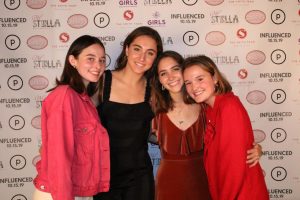
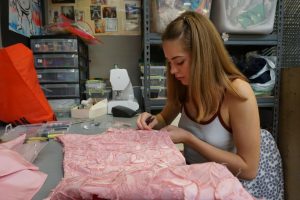
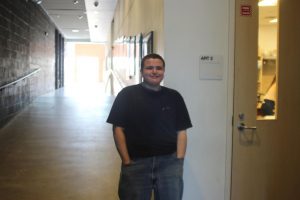
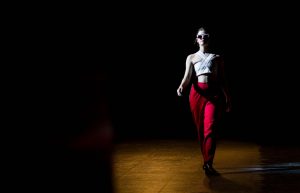

georgie murray • Feb 28, 2020 at 12:29 pm
I really like this story. I didn’t know much about the fashion program at Mac. This story gave some really good descriptive information. I’m excited to see what else they create.
Lily Brode • Feb 25, 2020 at 9:42 am
This is really cool. I didn’t know we had stuff like this happening at McCallum. Keep up the great work.